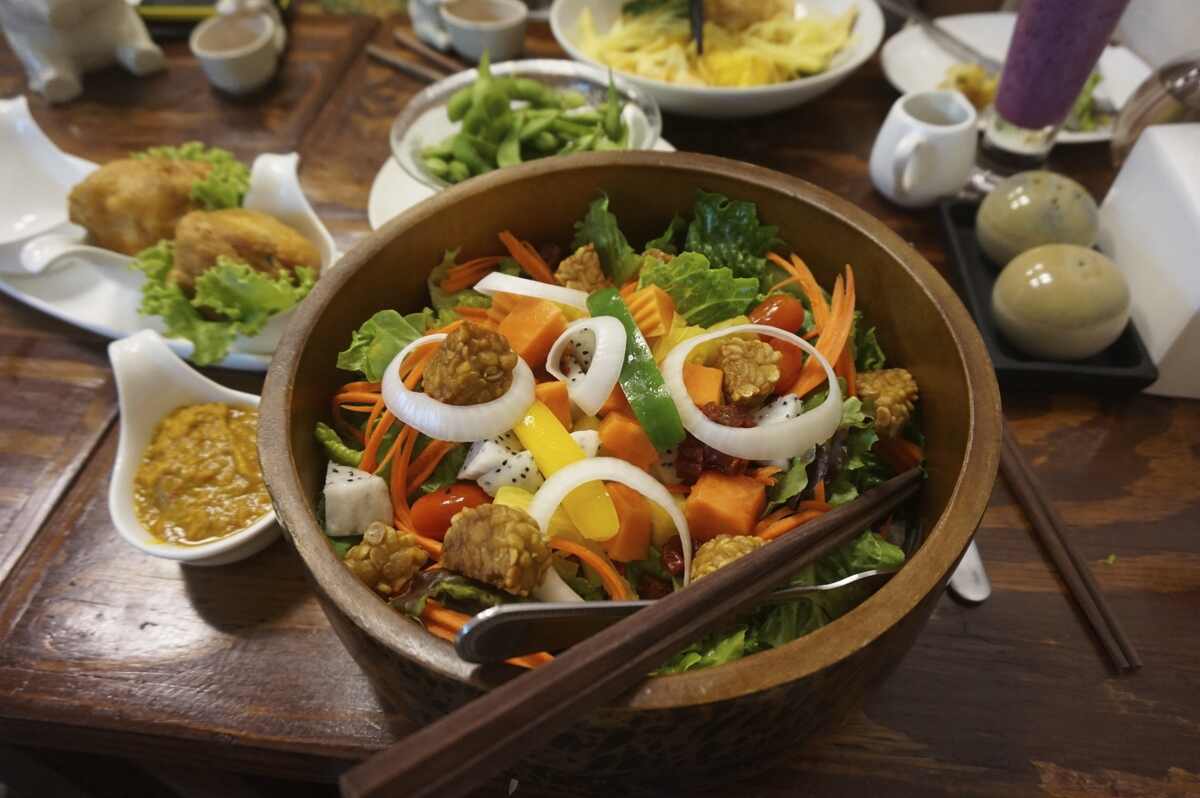Undergoing a tooth extraction can be a unnerving experience, necessitating careful attention to post-procedure care. A crucial aspect of recovery involves adhering to a soft foods diet that supports healing while minimizing discomfort. This guide provides a comprehensive list of 50 Soft Foods to Eat After Tooth Extraction, along with essential guidelines for optimizing your diet during recovery.
50 Soft Foods to Eat After Tooth Extraction
- Applesauce: This smooth, easily digestible option is a classic choice, providing a touch of natural sweetness without requiring chewing.
- Baked Apples: Softened through baking, these apples are gentle on the extraction site and offer a comforting, mildly sweet flavor.
- Baked Beans: Soft and rich in protein, baked beans can be a nutritious adding to your diet, offering sustenance without hardness.
- Baked Sweet Potatoes: When well-cooked, sweet potatoes become soft and creamy, making them ideal for post-extraction nourishment.
- Baby Food: Convenient and designed explicitly for delicate palates, baby food offers a variety of textures and flavors that are easy to consume.
- Broth-Based Soups: These soups are not only soothing but also hydrating, providing necessary nutrients without straining the healing gums.
- Chia Pudding: When soaked, chia seeds form a gelatinous texture that is gentle on the mouth while also delivering beneficial omega-3 fatty acids.
- Cooked Vegetables: Soft steamed or boiled vegetables can provide essential vitamins & minerals, aiding in the healing process.
- Cottage Cheese: Soft and mildly tangy, cottage cheese is an excellent source of protein & calcium, supporting bone and tissue repair.
- Cream of Wheat: This warm, smooth cereal is accessible on the gums and can be customized with various toppings for added flavor.
- Creamed Spinach: Rich in iron and vitamins, creamed spinach is both nourishing and gentle on sensitive areas in the mouth.
- Custard: With its creamy consistency, custard is a sweet, soothing option that can help satisfy cravings without irritation.
- Egg Salad: Soft and protein-rich, egg salad can be a filling option if prepared with finely chopped ingredients and a smooth dressing.
- Fish: Poached or steamed fish provides essential protein and is soft enough to be easily chewed and swallowed.
- Frozen Yogurt: Its excellent texture can be soothing to the extraction site and deliver beneficial probiotics.
- Greek Yogurt: Thick & creamy, Greek yogurt is packed with protein and can be flavored with pureed fruits for added nutrition.
- Gnocchi: This soft pasta is a great option if cooked thoroughly. It offers a satisfying texture that is easy to manage.
- Ground Chicken: Cooked until tender, ground chicken can be incorporated into various dishes without extensive chewing.
- Hummus: Smooth and nutrient-dense, hummus is an excellent source of protein & can be enjoyed with soft bread or on its own.
- Ice Cream: While not the most nutritious option, ice cream’s cold, soft texture can provide temporary relief and comfort.
- Jell-O: This gelatinous treat is easy to consume and can provide a refreshing change from more solid foods.
- Lentil Soup: Soft and hearty, lentil soup is a nutritious option that can be blended for a smoother texture.
- Macaroni and Cheese: This dish can be comforting and easy to eat when made with tender pasta and a creamy sauce.
- Mashed Avocado: Rich in healthy fats, mashed avocado is a creamy, nutrient-dense choice that is gentle on the extraction site.
- Mashed Bananas: Sweet and smooth, mashed bananas offer a soft, easy-to-digest option rich in potassium.
- Mashed Potatoes: Classic and versatile, mashed potatoes can be seasoned to taste and provide a soft, soothing texture.
- Mashed Pumpkin: Like other mashed vegetables, pumpkin offers a smooth texture and beneficial vitamins.
- Meatloaf: When cooked until tender and finely chopped, meatloaf can be a good origin of protein without being too difficult to chew.
- Milkshakes: These are a cold, soft option that can be customized with various flavors and added nutrients through protein powders or fruits.
- Muffins: Soft, moist muffins that are well-cooked and do not have hard chunks or seeds can be eaten.
- Nut Butter: Smooth nut butter can be a good source of protein and healthy fats, ideal when spread on soft bread or eaten alone.
- Oatmeal: This warm, soft cereal can be prepared with milk or water and flavored with fruits or honey for added nutrients.
- Pancakes: Soft and fluffy pancakes can be comforting if they are tender and not overly dense.
- Polenta: Creamy polenta is a versatile and soft option that can be love plain or with many soft toppings.
- Porridge: Like oatmeal, porridge is a smooth, easy-to-eat cereal that can be customized with different flavors and textures.
- Protein Powder: When mixed into smoothies or milkshakes, protein powder can enhance nutrient intake without compromising ease of consumption.
- Pudding: Smooth and creamy, pudding can be a comforting and easily digestible dessert option.
- Pureed Fruit: Offering a variety of flavors and nutrients, pureed fruit is gentle on the gums and can be consumed quickly.
- Pureed Soups: Blended soups provide a smooth, nutrient-rich option that can be both soothing and easy to manage.
- Quinoa: When cooked until soft, quinoa is a high-protein grain that can be a nutritious addition to your diet.
- Refried Beans: Soft and protein-rich, refried beans are gentle on the mouth and can be a satisfying meal component.
- Rice Pudding: This creamy, sweet option can be soothing and provide comfort and necessary nutrients.
- Risotto: Soft and creamy, risotto can be customized with various ingredients for added flavor and nutrition.
- Scrambled Eggs: Soft & easy to chew, scrambled eggs are a good source of protein and can be seasoned to taste.
- Shepherd’s Pie: Made with tender meat and mashed potatoes, shepherd’s pie is comforting and easy to eat.
- Smoothies: Blended with fruits, vegetables, and protein powders, smoothies offer a nutrient-packed, easy-to-consume option.
- Soft Bread: Fresh, soft bread without hard crusts is easy to eat and can be combined with various soft toppings.
- Soft Cheese: Soft varieties of cheese, like cream cheese, can be a gentle addition to your diet.
- Soft Pasta: Well-cooked pasta is accessible on the gums and can be enjoyed with smooth sauces for added flavor.
- Tofu: Silken tofu is soft & can be incorporated into various dishes for added protein and nutrients.
General Guidelines for Post-Tooth Extraction Diet
The Texture and Temperature of Food
When recovering from a tooth extraction, the texture and temperature of your food play critical roles in ensuring a smooth healing process. Opt for soft foods that need minimal chewing to avoid irritation and discomfort. Avoid scorching foods and beverages, as they can disrupt healing and exacerbate sensitivity.
Foods to Choose for 50 Soft Foods to Eat After Tooth Extraction
- Soft and Easy to Chew: Select gentle foods on the extraction site. Mashed vegetables, pureed fruits, and soft cheeses provide essential nutrients without necessitating vigorous chewing.
- Cool or Room Temperature: Too hot Foods can irritate the extraction site. Opt for excellent or room-temperature options to minimize discomfort.
- Nutrient-Rich: Choose foods rich in vitamins, minerals, and protein to aid faster and more effective healing.
Foods to Avoid
- Crunchy Foods: Avoid nuts, seeds, chips, & hard bread, as they irritate the extraction site and cause discomfort.
- Acidic Foods: Citrus fruits & other acidic foods may irritate and should be limited during the initial stages of recovery.
- Spicy Foods: Spicy foods can exacerbate discomfort and should be avoided to prevent irritation of the extraction site.
- Alcoholic Beverages: Alcohol can impede with the healing process 7 should be excluded from your diet during recovery.
- Extremely Hot Foods and Beverages can root discomfort & potentially dislodge the blood clot essential for healing.
- Sugary Foods and Beverages: Although soft, sugary items can increase the risk of tooth decay & plaque buildup, particularly if maintaining oral hygiene is challenging post-extraction.
Additional Considerations for Post-Tooth Extraction Care
Hydration
Maintaining proper hydration is crucial following a tooth extraction. Opt for water, herbal teas, or non-acidic beverages that are cool or at room temperature. Avoid using straws, as the suction can muddle the healing clot and lead to complications such as dry sockets. Instead, drink right from a cup or glass.
Meal Frequency
Frequent, smaller meals can be easier to manage than larger ones, significantly if your appetite diminishes or you’re experiencing discomfort. This approach helps maintain adequate nutrition and minimizes strain on the extraction site.
Avoiding Certain Foods
While it’s essential to focus on soft foods, specific items should be entirely avoided during the recovery phase. These include:
- Hard or Crunchy Foods: Foods like popcorn, granola bars, and crusty bread can cause unnecessary pressure on the extraction site and may lead to complications.
- Sticky Foods: Caramels, taffy, and gummy candies can adhere to the teeth and gums, potentially irritating the extraction site and complicating oral hygiene efforts.
- Hot Spices and Condiments: Ingredients such as hot sauces or heavily spiced dishes can exacerbate irritation and cause discomfort during healing.
Incorporating Nutritional Supplements
To support healing, consider integrating nutritional supplements into your diet. Vitamin C can aid tissue repair, while calcium and vitamin D support bone health. Ensure that these supplements are in forms that are easy to consume, such as chewable tablets or powders mixed into smoothies.
Maintaining Oral Hygiene
Good oral hygiene is import to prevent infections & promote healing. Delicate brush your teeth with a soft-bristled toothbrush, avoiding the extraction site. Clean with a mild saltwater solution can help out keep the area clean & reduce the risk of infection. Avoid vigorous rinsing or spitting, as this can dislodge the blood clot.
Monitoring for Complications
Be attentive to any signs of complications similar as severe pain, lavish bleeding, or signs of infection, including fever or swelling. If you experience any of these symptoms, consult your dentist promptly for guidance.
Comfort Measures
To enhance comfort during recovery, you may use ice packs applied to the outside of your face to reduce swelling. Additionally, keeping your head elevated, even while sleeping, can help minimize swelling and discomfort.
Gradual Reintroduction of Foods
As healing progresses, gradually reintroduce more solid foods into your diet. Begin with soft but slightly more textured items than the initial choices. Monitor your comfort level and adjust accordingly to make sure a smooth transition back to your regular diet.
Conclusion
A thoughtful approach to your diet 50 Soft Foods to Eat After Tooth Extraction can significantly impact the healing process and overall comfort. By focusing on soft, nutrient-rich foods and adhering to general guidelines for post-extraction care, you can support a smoother recovery and minimize potential complications. Listen to your body, maintain good oral hygiene, & consult your dentist if any concerns arise. You’ll be well on your way to a swift and successful recovery with proper care and attention.









